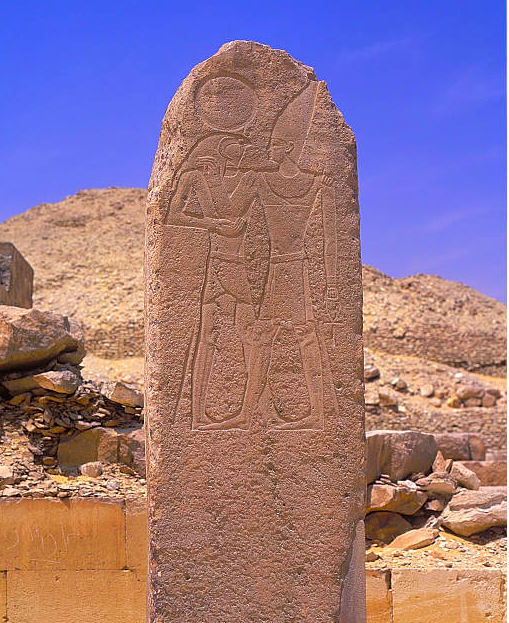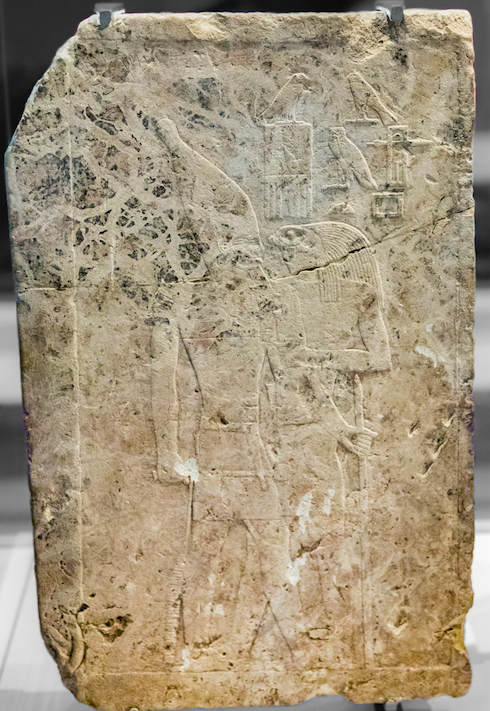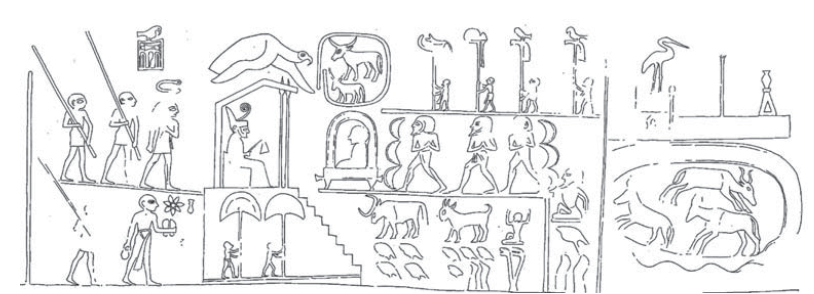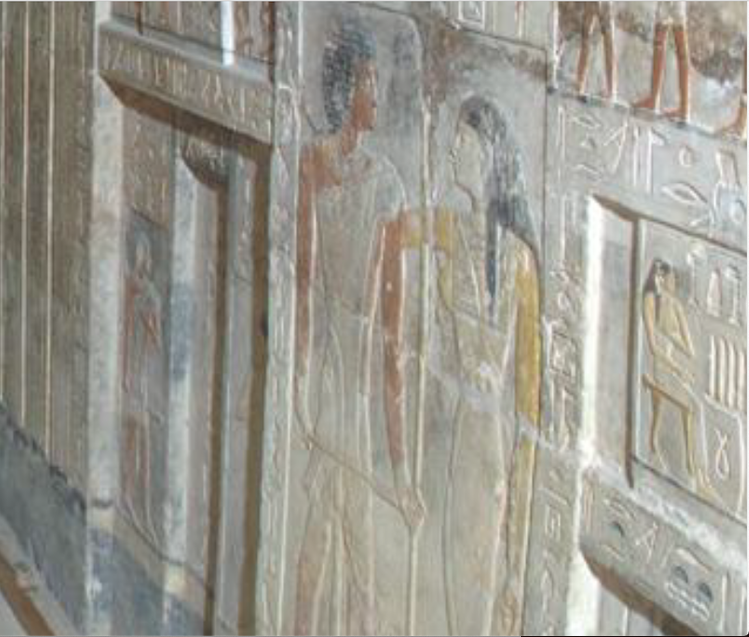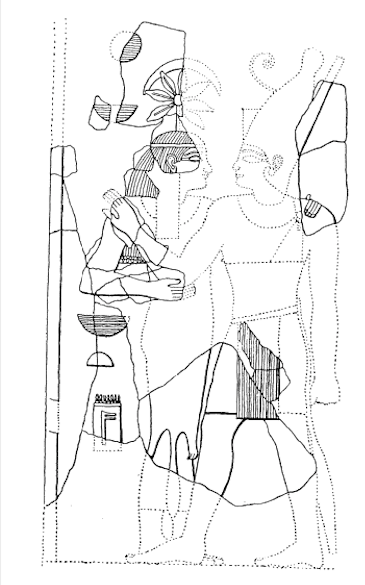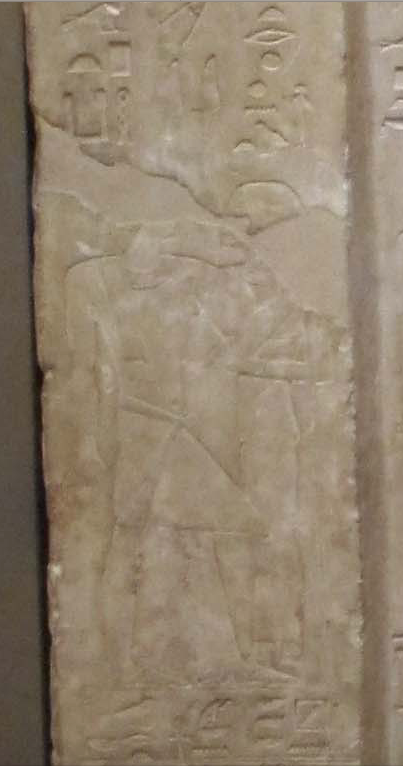The royal garment
Stela of king Narmer (to read « Abou-Hor, the desired of Horus ») in greenschist (Hght. 64 cm), from Hiéraconpolis, and kept in Cairo. End of dynasty 0, or founder of first dynasty.
The top of the kilt is decorated, along the belt, by the representation of four heads of woman with ears and horns of cows, wich are characteristc of the goddess Hathor.
De fait, the royal kilt chendjit was assimilated with the goddess Hathor (name meaning « castle of d’Horus ») (TP 335), personnifying the « earth /country » and the wife of pharaoh (cf. infra triads of Mykérinos) :
TP 335
T/F/Wg 46 P/F/W 24 M/F/Wd 51 N/F/Wg 37
How beautiful is the fact of seeing N (nfrw m?w N),
(wearing) the headband witch is at the front of Rê (sšd jm wpt R?),
his kilt shendjit on him as Hathor (šn?wt=f ?r=f m ?wt-?r),
his plumage being the plumage of a falcon (šwt=f m šwt bjk),
in order that he goes out to the sky among his brother the gods (pr=f rf jr pt mm snw=f n?rw) ».
The « kilt shendjit »/Hathor, was then also assimilated to the « earth/country », « the wife » of N :
TP 267
W/A/S 24 T/A/S 6 P/A/S 5 M/F/Sw i 1 N/F/Se B 87
(…) Stand, remove yourself (Ra), you who don't know any more (=who is not united to) reeds (var. barley) (= egyptian folk cf. palette de Narmer) (???, jdr ?w, j?m jwt),
that N (=Osiris) can sit on your seat ( = reeds (supra)/ égyptian folk) (?ms W pn m st=k),
and that he can row in the sky, in your boat, O Ra, (?nny=f m pt, m wj?=k R?)
that he can repel la earth from your boat, O Ra (jwd N pn t? m wj?=k, R?).
When you go out from the horizon, (s??w pr=k m ??t)
his scepter sekhem is in his hand (s?sw s?m=f m-?=f),
as this one who row your boat, Rê (m sqd wj?=k R?)
§ 369 (When) you ascend to the sky (j?=k n pt)
you are far from the earth (?r=k r t?), far from the wife, the kilt shendjit (?r=tj r ?mt, šn?wt).
It was at a « going out » after « a going down » in water (TP 325, TP 563) of N with Horus (TP 682) (« (N) on the two fingers of Horus » (TP 268) or inversely « his (=of N) son Horus for his two fingers » TP 303), to bathe, that N receaved « his divine kilt » (TP 325), « his golden kilt » (TP 563), « the linen, sšrw » also called «lips,spty» (=double Ennéade cf. TP 506) (TP 515, 559), the « eye (jr.t, fém.) of Horus » (TP 414), wich could also be fished like a fish (TP 156) red (TP 470).
This bathing and vêture allowed to N to « be efficient (mn?, TP 268) » and to « be rewarded (fq?) » by the conjugal union with Osiris-Rê (TP 515,559) .
This royal garment of wife/country, was also the one of all gods/spirits akhou (= deified men) (TP 473, 599).
That's why, in the Love's Songs (New Kingdom), the «sister»/humanity speaks so to her «brother»/Horus-Ra :
« (She) My god, my lotus (p?y=j n?r, p?y=j sšn […]
my heart jb (=ka) is to go down to bathe in front of you (jb=j r h?t r w?b=j m-b??=k)
to give that you look at ma que tu regardes (=union) ma beauty (d=j [ptrj]=k nfrw=j)
in a garment of royal linen first (m mss(.t) n(.t) sšr-nsw tpy)
while it is impregnated with camphor ! (jw=s t?b=tw m tj-šps)
[…] plaited reeds ([nb]d(=w) n js.w)
I will go down in water with you (h?y=j r mw r-?n?=k),
I will go out with you bringing you a red fish (=ka/oeil d'Horus) (pry=j n=k ?r w? dšr) ,
wich will be efficient on my fingers (jw=f mn?(=w) ?r ?b?w=j).
I will put down it in front of you who will see (w??=j sw m-b??=k ?r p[trj ...]
brother, come to look at me ! (sn, mj ptrj=k wj) » (vase de Deir el-Medineh, stance 3).
Laure de Lamotte ©
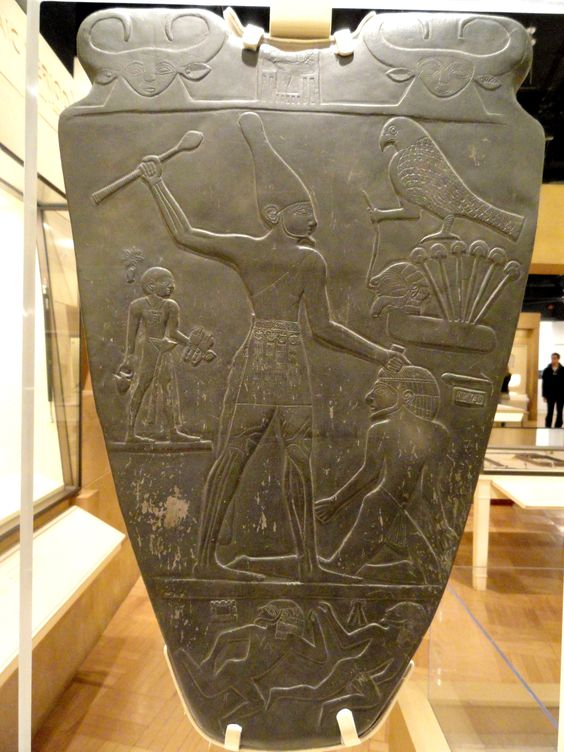
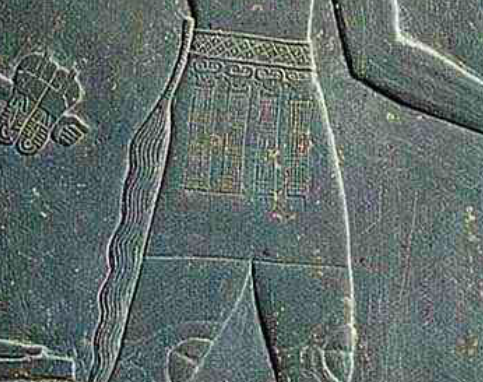
Last edited: 24/05/2021
Add a comment


